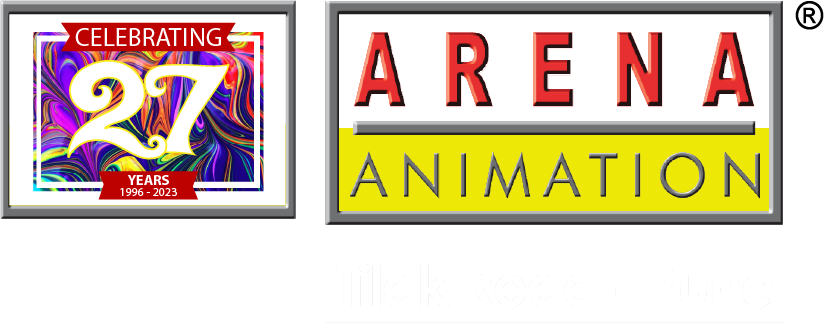Graphic Design Courses: What to Expect in Duration, Qualifications, and Skills
If you’ve just completed your 12th and are thinking of pursuing a career in the creative field, a graphic design course can open doors to an exciting industry.
Graphic design is an essential skill in today’s digital world, as it is shaping how brands communicate and how visual experiences are created.
If you want to know about the graphic design course details, including duration, qualifications, and what you’ll learn, keep reading this blog. As we talk about graphic design courses offered by Arena Animation.
Learn About Arena Animation
Arena Animation, Tilak Road is a well-known name in the creative education sector. With more than two decades of experience in the industry, Arena Animation provides a hands-on learning environment with access to industry-standard software and tools. Their experienced faculty, real-world projects, and placement assistance make it a popular choice for students looking to step into the world of design.
Arena Animation’s courses are designed to help you master the fundamentals while also preparing you for advanced roles in graphic design.
Why Choose a Graphic Design Course?
Graphic design is the art of visually communicating messages through images, typography, color, and layout. A graphic designer’s work can be seen everywhere—from logos and websites to social media graphics, packaging, and advertisements. As industries shift online, demand for skilled graphic designers has increased, making this career path both creative and rewarding.
Course Duration
The duration of the graphic design course depends on the type of program and level of expertise you wish to achieve. Based on it, the course duration can be categorized into the following.
1. Certificate Courses:
These are short-term programs designed to cover the basics. Typically, certificate courses range from 6 to 8 months. These are ideal for students looking for quick skill acquisition and who want to begin working immediately.
2. Diploma Courses:
A more comprehensive option, diploma programs usually take 12 to 18 months to complete. They delve deeper into graphic design principles, software tools, and industry trends. For students serious about building a foundation for a long-term career, diploma courses offer more extensive training.
3. Advanced Diploma or Degree Courses: For those looking to explore advanced techniques and build a professional portfolio, an advanced diploma or bachelor’s degree in graphic design typically takes 2 to 3 years. These programs often include internships, real-world projects, and specializations in areas like branding, UI/UX design, and motion graphics.
Qualifications Needed
If you’re wondering about the entry requirements, the good news is that most graphic design courses are accessible for students who have completed their 12th grade (HSC). Here’s a breakdown of the qualifications needed for different course levels:
1. Basic Certificate Courses:
For entry-level programs, students typically need to have passed their 12th grade (HSC) from any recognized board. Basic proficiency in English and a passion for design are usually enough to get started.
2. Diploma and Advanced Diploma Courses:
For these programs, you will again need a minimum qualification of a 12th pass. However, institutions may prefer students with some creative background or interest, such as experience with sketching, drawing, or familiarity with design software.
What You’ll Learn
Graphic design courses are structured to provide students with both theoretical knowledge and practical skills. Here’s a brief overview of what you’ll typically learn:
1. Design Fundamentals:
You’ll begin by understanding the basic principles of design, such as composition, layout, color theory, typography, and visual hierarchy. These elements are the building blocks of any successful design.
2. Software Training:
Mastering industry-standard software is crucial. Courses will train you in key programs like Adobe Photoshop, Illustrator, and InDesign, as well as newer tools like Sketch and Figma. Learning these programs will enable you to create everything from simple logos to complex digital designs.
3. Typography and Branding:
Typography is the art of arranging type, and it plays a critical role in graphic design. You’ll learn how to choose the right fonts and how typography influences brand perception. Additionally, branding concepts, including logo design and brand identity, are typically covered in more advanced programs.
4. User Interface (UI) and User Experience (UX) Design:
For those interested in web design, you’ll explore the principles of UI and UX design. You’ll learn how to create visually appealing interfaces while ensuring they are user-friendly and functional. This is an essential skill as more companies shift toward digital platforms.
6. Portfolio Development:
A crucial part of any graphic design course is portfolio development. You’ll work on various projects that allow you to build a professional portfolio, showcasing your creativity and technical abilities to potential employers.
Career Opportunities After Completing a Graphic Design Course
After completing a graphic design course, a wide range of career paths are available to you, depending on your area of specialization. Here are some common job roles:
1. Graphic Designer:
You’ll create visual concepts for print and digital media, including branding materials, websites, social media graphics, and more.
2. Web Designer:
In this role, you’ll focus on creating and maintaining the visual and functional aspects of websites.
3. UI/UX Designer:
Specializing in creating user-friendly interfaces and enhancing the user experience across digital platforms.
4. Branding Specialist:
You’ll work on developing a brand’s visual identity, ensuring it resonates with the target audience.
Frequently Asked Questions
What qualifications do I need to enroll in a graphic design course?
Answer:Most graphic design courses require you to have completed your 12th grade.
How long does a graphic design course take?
Answer:The duration varies depending on the type of program. Certificate courses take 6-8 months, diploma courses last 12-18 months, and advanced diplomas or degrees can take up to 2-3 years.
What software will I learn in a graphic design course?
Answer:You’ll learn industry-standard software such as Adobe Photoshop, Illustrator, and InDesign. Advanced courses may also cover tools like Sketch and Figma.
Is graphic design a good career option?
Answer:Yes, graphic design offers diverse career opportunities in areas like advertising, branding, web design, and UI/UX design. The demand for skilled graphic designers is constantly growing.
Does Arena Animation provide job placement assistance?
Answer:Yes, Arena Animation offers placement assistance to help students find jobs in top companies after completing their graphic design course.



